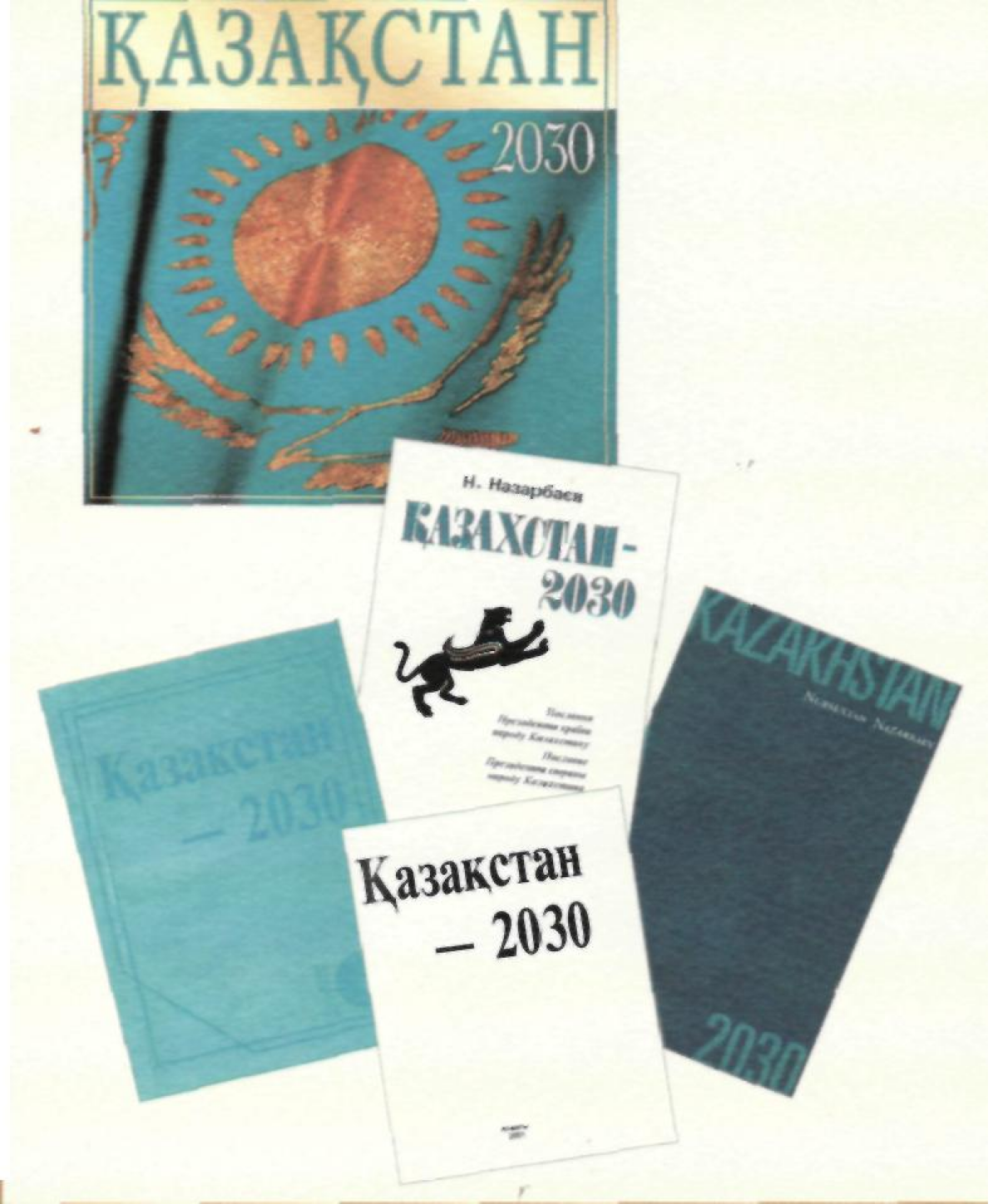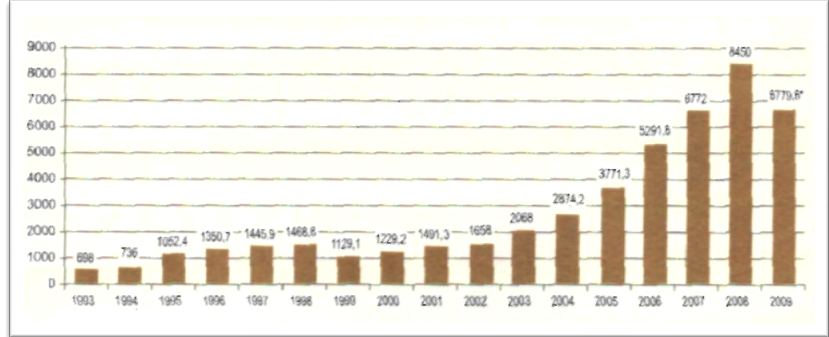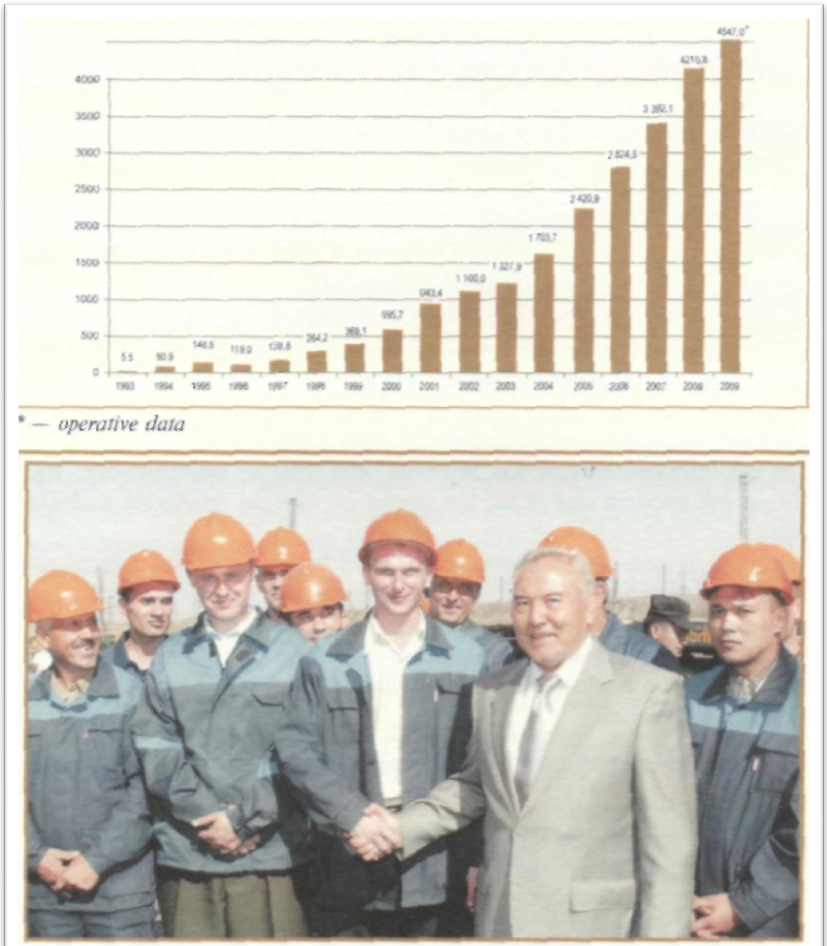
For our country to achieve the prospects I mentioned above we have to implement the following long-term priorities:
1. NATIONAL SECURITY: Ensure development of Kazakhstan as an independent sovereign state preserving its complete territorial integrity.
2.DOMESTIC POLITICAL STABILITY AND CONSOLIDATION OF THE SOCIETY: Safeguard and strengthen domestic political stability and national unity. It would enable Kazakhstan put the national strategy into practice in the course of the current and the upcoming decade.
3. ECONOMIC GROWTH BASED ON AN OPEN MARKET ECONOMY WITH HIGH LEVEL OF FOREIGN INVESTMENTS AND INTERNAL SAVINGS. Gain realistic, stable and steadily growing rates of economic growth.
4. HEALTH, EDUCATION AND WELL-BEING OF KAZAKHSTANI CITIZENS: Consistently improve standards of life, health, education and opportunities of the Kazakhstanis. Improve natural environment in the country.
5. POWER RESOURCES: Effectively utilize power resources of Kazakhstan through rapid increase in extracting and exporting oil and gas with the aim of gaining revenues which would enhance stable economic growth and improvement of living standards of the people.
6. INFRASTRUCTURE, MORE PARTICULARLY TRANSPORT AND COMMUNICATION: Develop these key sectors in such a way that they add to strengthening of national security, political stability and economic growth.
7. PROFESSIONAL STATE: Establish an effective and up-to-date corps of civil servants and state-owned formations of Kazakhstan loyal to the cause they serve to and capable of acting as representatives of the people in achieving our priorities.
For each of these long-term priorities we must elaborate and consistently implement a special strategy concentrating our efforts on specific actions outlined in one-year, three-year and, finally, five-year plans.
These long-term priorities must serve the purpose of focusing the efforts exerted by both the state and our citizens, they must make the basis of criteria in forming the budget of the country and personal policy."
(The message of the President of Kazakhstan Nursultan Nazarbayev to people of Kazakhstan "Kazakhstan — 2030. Prosperity, Security and Ever Growing Welfare of All the Kazakhstanis").

"Today, Kazakhstan finds itself on the eve of a new stage of social and economic modernization and political democratization.
The essential factors that will allow us to claim a place among the most advanced countries of the world consist of the following in my view.
First, the foundation of a successful and dynamically developing society should only be based on a modern, competitive and open market economy that is not confined to one extractive sector. It is an economy based on respect for, and protection of, private property rights and contractual relations; it fosters initiative and entrepreneurship on the part of all members of society.
Second, we are building a socially oriented society, in which the elder generation, mothers, children, and youth are all surrounded with care and attention. We are building a society that provides high quality and advanced social standards of life for all strata of our country's population.
Third, we are building a free, open and democratic society.
Fourth, we are creating and reinforcing a state based on the rule of law and on a system of checks and balances.
Fifth, in
Kazakhstan we guarantee and ensure full equality of all religions and
inter-religious harmony. We respect and nurture the best traditions of Islam
and of other world and traditional religions, but we are building a modern
secular state.
Sixth, we strive to preserve and develop the centuries-long traditions, language, and culture of the Kazakh people while also providing interethnic and intercultural harmony and progress for the unified nation of Kazakhstan.
Seventh, one of our most important priorities is positioning Kazakhstan as a rightful and responsible member of the international community, which carries with it the vital function of providing geopolitical stability and regional security.
(From President's Nursultan Nazarbayev's annual state of the nation address to the people of Kazakhstan on 1 March 2006 "Kazakhstan on the Eve of a Leap Forward in its Development: A Strategy for Kazakhstan's Designation as One of the World's 50 Most Competitive Countries")
"We understand that the current economic growth of our country is mainly related to the extractive sector. However, we also have different tendencies, since a high rate of growth can be seen in other economic sectors, including the financial sector, the processing sector, agriculture, construction, transportation, and communications.
It is important to admit that our economy at present is developed extensively, and Kazakhstan's enterprises use too much energy and have a low productivity rate.
Kazakhstan will find itself at the periphery of the world economy in 20—25 years if we do not change the existing situation.
Therefore, today we have the important goal of developing new competitive industries that will be in demand in foreign markets. It is impossible to achieve this without new technologies and modern models of management oriented toward working in the global competitive environment.
The dynamics of the GDP per capita in US dollars (1993—2009)

* — operative data
According to experts' estimates, Kazakhstan has entered the industrial phase of economic development. Nonetheless, we should focus on the next phase, the so-called post-industrial society, or the period of developing innovations and technologies.
Today we should understand that we, the nation of Kazakhstan, cannot waste time on extensive development.
We should strive to achieve standards of living in Kazakhstan at a level comparable to that of the 50 most competitive countries in the world. The key competitive advantage of Kazakhstan in the international market should be its highly-qualified and mobile human capital as well as its continuing introduction of innovations''.
In 2009, Kazakhstan achieved per capita GDP of $6779,60 US dollars.
Investments into the fixed capital in Kazakhstan in 1993—2009 (prior to 1999 — investments to capital construction), billion tenge

According to classifications by the World Bank, Kazakhstan belongs to the middle-income group of countries.
The World Bank also estimates that Kazakhstan is among the top 20 countries in terms of attracting investments. The total volume of direct foreign investments in the economy of Kazakhstan amounted to more than 70 billion US dollars.
Kazakhstan's business community actively invests in foreign countries ($26 billion US dollars). Kazakhstan was the first country among the members of the Commonwealth of Independent States to create a national fund for achieving stable social and economic development and for reducing dependency on negative external shocks. The international assets of the country together with the assets of the national fund exceed US$40 billion.
In the last decade, the international trade turnover of Kazakhstan increased more than six times.
Leading Kazakhstani companies adopted international standards in their business practices and became well-known for this in the world (KazMunaiGaz, Kazakhmys, Kazatomprom, and others).
Kazakhstan is a country with successful financial and banking system, which is recognized by international experts as ranking among the best in the region. Banks such as Kazkommertsbank and Narodnyi Bank have high international ratings.
The country has a positive business environment which is continuing to improve.
Kazakhstan also contributes to global energy security. Kazakhstan is 7th in the world in oil reserves, 6th in gas reserves, and 2nd in uranium ore. By 2017, Kazakhstan will become one of the ten largest oil and gas producing and exporting countries.
Kashaghan is one of the largest deposits of hydrocarbon discovered after the achievement of independence. Its exploitation at full capacity would elevate oil extraction in Kazakhstan to 150 million tons by 2015.
In addition, Kazakhstan is dynamically developing its mining industry, non-ferrous and ferrous metallurgy, machine-building, construction industry, and small and medium enterprises.
Kazakhstan is actively developing its agricultural sector. Agricultural production increased almost three times in the course of the last ten years.
Agriculture is one of the priority sectors for developing the economy of the republic, and it has huge potentials and reserves. Various climatic conditions in Kazakhstan are suitable for the cultivation of almost all crops characteristic of a temperate climate and for animal husbandry.
In 2009, the country's agricultural production was valued at 330 billion tenge, which is three percent higher than in previous years. The total cultivated area reached 21.6 million hectares, which represents an increase of about 1.6 million hectares in 2008.
Gross harvest of crops and changing of sowing area for crops in Kazakhstan during 1991—2009 years
Traditionally, Khostanai, North Kazakhstan and Akhmola oblasts (provinces) have yielded the most bounteous harvests in the country.
Kazakhstan is first in the world in per capita grain production and in per capita flour exports.
Kazakhstan exports its grain to more than 40 countries.
The government's main goal is to develop a socially responsible economy and to achieve economic prosperity for its people. It has managed to establish an effective model for developing its human potential and building a strong foundation for the national standard of living it has achieved.
The country is also successful in bringing social welfare to its population.
Since 1997, the minimum standard wage has grown more than 4,5 times, and the average monthly nominal wage increased from 8500 tenge to 67 639 tenge, or more than eight times.
The economic policy of Kazakhstan is the foundation of the country's success. Therefore, the program "Thirty Corporate Leaders of Kazakhstan" was introduced to consolidate private business and state efforts in creating new enterprises and modernizing existing ones, in achieving economic diversification, and developing export-oriented non-extractive sectors of the national economy.
Currently, several large projects are established within the framework of the realization of this program.
For example, by the end of 2007, the first part of the electrolytic plant in Pavlodar oblast was completed; it was built to produce high quality aluminum for export.
There are 39 national and more than 6000 provincial-level (oblast) cultural organizations in Kazakhstan. Included in this number are 164 museums, 3763 libraries. 2320 clubs, 50 theatres, 24 concert halls, 58 cinemas, 4 zoological gardens, 2 circuses and 28 recreation parks. In the last three years, 203 new-cultural centers were opened.
The legal foundation for the solution of conceptual and complex problems in the area of culture was strengthened by the adoption of the Law on Culture in 2006.
Kazakhstan's government also supports the "Cultural Heritage" program. Under this program, 26 historical and cultural monuments as well as architectural sites were restored.
Kazakhstan also invests in training high-quality sport athletes in order to improve the competitiveness of Kazakhstan in the international sport arena. Eleven sport centers are under construction now and 13 new sport complexes will be built in 2009-2011.
In 2009, Kazakhstan's athletes won 93 medals at various international competitions including 6 Olympic gold medals and 16 non-Olympic medals. This is the highest record for Kazakhstan since its independence 18 years ago.
One of the new projects is the construction of the third Zhanazhol gas-processing plant. It will be built in several stages. In 2008, a new gas turbine electric power station was completed at this site.
Other projects involve the production of carbon blacks, white carbon, textile and steel cord for a tire producing plant.
There are new projects, such as agricultural machinery for soil preparation and cotton growing in the planning stage. The full cycle of the knitwear textile industry from yarn production to ready-to-wear garments received funding that came to a total of 138 million US dollars.
It is vital for Kazakhstan to produce its own construction materials. The projects include the increased production of lime, silicate bricks, and non-metallic materials in Mangystau oblast, the renovation of the Akhtubinsk ferro-concrete (reinforced concrete) plant, and the rehabilitation of the non-metallic Shidertinsk plant.
Among new projects are agricultural holding in Pavlodar oblast, construction of a cement plant in Khyzyl Kiyi and a shop for manufacturing poly-wood constructions in the South-Eastern region of Kazakhstan. There are works going on creation of the fourth smelting of rare metals at the Irtysh chemical and metallurgical works in West Kazakhstan oblast; a modem production center for metal packing materials is under construction, and plants are being developed for revival of the production of rare metals in Kyrgyzstan.
The president of Kazakhstan has also promoted the development of the foundation of the chemical and petrochemical industry. This includes, as first steps, the manufacturing of beam pumps in Petropavlosk, the production of high-pressure vessels and columns for oil and gas industries in Mangystau oblast, the production of roll roofing materials and "Rukan" hydroisolation materials, the production of make-up detergents and cleaners, in Almaty oblast, and the development of production capacity for coal coke in Kharaghanda oblast.
IT sector projects are represented by a fiber optic cable plant in Almaty oblast and contracted manufacturing of home electronics.
President Nursultan Nazarbayev believes that the foundation of the strategy for sustainable economic development is an innovative approach in corporate management.
Kazakhstan has all that is required to complete the transitional stage of its economic growth in order to join the group of the world's 50 most competitive countries.
Source: NURSULTAN NAZARBAYEV: THE FOUNDER OF THE INDEPENDENT STATE (The Chronicles of a Leader) published in Almaty, 2010, pp. 116-132
Data was given from the Institute of State History, Committee of Science of The Ministry of Education and Science
